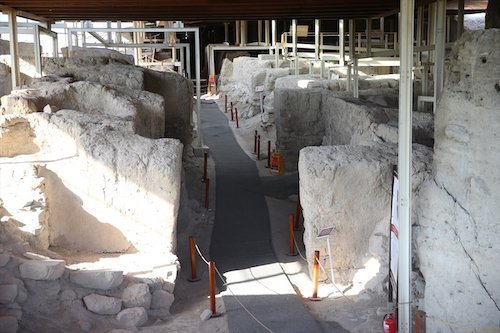* Photos: Anadolu Agency (AA)
Click to read the article in Turkish
In a statement released on Monday (July 26), the Ministry of Foreign Affairs of Turkey has announced that Arslantepe, a 30-meter-high archaeological mound in southeastern Turkey dating back to some 8,000 years, has been added to the UNESCO World Heritage List.
The decision to add the Arslantepe Mound was taken during the Extended 44th UNESCO World Heritage Committee online session in China.
Arslantepe, meaning "Lion Hill", has been on the UNESCO's World Heritage Tentative List since 2014, the Foreign Ministry statement has reiterated, calling it one of Turkey's earliest religious and civil sites.
With the addition of the 8,000-year-old Arslantepe Mound in Malatya, the number of sites from Turkey in the UNESCO's list has grown to 19.
About the Arslantepe Mound

The UNESCO has shared the following information about the mound:
"Arslantepe Mound is a 30-metre-tall archaeological tell located in the Malatya plain, 12 km south-west of the Euphrates River. Archaeological evidence from the site testifies to its occupation from at least the 6th millennium BCE up until the late Roman period.
"The earliest layers of the Early Uruk period are characterized by adobe houses from the first half of the 4th millennium BCE. The most prominent and flourishing period of the site was in the Late Chalcolithic period, during which the so-called palace complex was constructed.
"Considerable evidence also testifies to the Early Bronze Age period, most prominently identified by the Royal Tomb complex.
" The archaeological stratigraphy then extends to the Paleo-Assyrian and Hittite periods, including Neo-Hittite levels.
"The site illustrates the processes which led to the emergence of a State society in the Near East and a sophisticated bureaucratic system that predates writing. Exceptional metal objects and weapons have been excavated at the site, among them the earliest swords so far known in the world, which suggests the beginning of forms of organized combat as the prerogative of an elite, who exhibited them as instruments of their new political power." (TP/SD)






as.jpg)